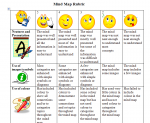
Didactic analysis is a model to prepare an educational activity. It takes you through the steps and elements of the learning experience.
Starting situation (Beginsituatie): collect information about the state of existing competencies and proficiencies of your learners. Add information about other characteristics like learning style and cognitive development for your target audience. 
Outcomes (Doelstelling): what do you expect your learners to achieve in this learning experience. Use SMART (specific, measurable, attainable, relevant and time-bound) criteria to formulate operational outcomes - in terms of demonstrated behavior. Creating a rubric may be useful. A rubric is a matrix of competencies, levels of proficiency and matching behavior. It is a set of criteria for grading. Learning experience itself is divided in: subject matter (leerstof), methods (werkvormen), learning activities (leeractiviteiten) and learning materials/aids/media (onderwijs/leermiddelen).
Subject matter (leerstof): for teacher and learning this is often experienced as what is really is about. It's the knowledge and skills that will be assimilated by the learner and will change the learner's behavior. In the case of permaculture an example of subject matter might be zone analysis as a tool in the design process.
Methods (werkvormen): there are many methods. Selection of an appropriate method is likely to depend on both the teaching style of the teacher as well as the learning style of the learners. Having a range of methods at hands will assist the teacher to respond to the behavior of the learners as the session evolves.
Learning activities (leeractiviteiten): a plan for what to do. This is the sharp end of the stick - where it is all really happening. Step by step description(for beginning teachers) or broad outline (for experienced teachers) guide with time management. This includes: beginning - middle - end structuring.
Learning materials/aids, media (onderwijs/leermiddelen): physical materials that the teacher and learners use during the session. Some materials need to be provided to the learners or requested from a teaching assistant. Some materials may be expected to be at hand - always good to check beforehand.
Finally the evaluation (evaluatie): This is where we check whether and to what degree the specified outcomes have been achieved. For most teachers (and learners) this is the hardest part of the DA model in practice. You can make a snapshot by using a rubric form. This can be a self-assessment, a peer-assessment or an assessment by the teacher or an observer. Ideally the assessment should be followed up by choosing what next to learn. The session might be a node in a linear curriculum, where achieving one step, means you go to the next in line. The evaluation may also be used to differentiate the learners into those that have achieved the goals and can go on to do some extra activities diversifying or strengthening their profile of competencies ad proficiencies and learners that failed and required remedial teaching - often going over the same subject matter in a different way more appropriate to their learning style or addressing deficiencies in their starting situation. If the curriculum is organised in a non-linear way, the evaluation may be followed with with a range of choices, each building on mastered competencies up to that point.
Examples
I'd like to invite you to supply your own examples below. Please comment.
- Log in to post comments
